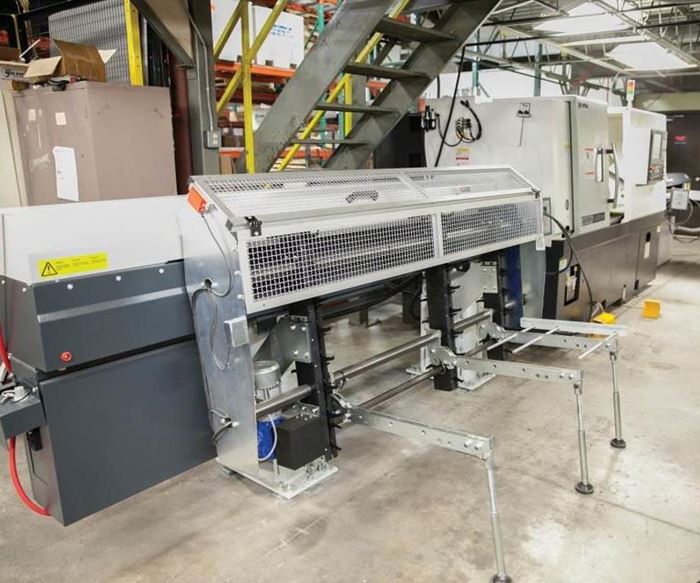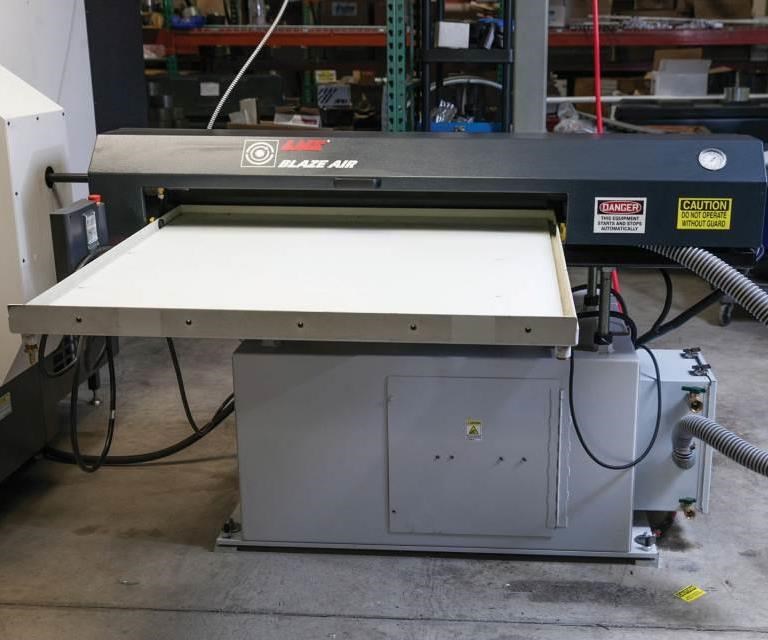Machine Communication Removes Operator Intervention
Gilson Co. needed a cost-effective way to produce thousands of parts. A fully automated cell from Gosiger Inc. reduced costs, improved quality and eased inventory management.
Share


Takumi USA
Featured Content
View More


Hwacheon Machinery America, Inc.
Featured Content
View More





Gilson Co. wanted to shift the way it did business at its Lewis Center, Ohio, facility. Instead of outsourcing production of critical parts, the company saw a growth opportunity in making and selling some of its own products. However, before moving in that direction, it would have to invest in two manufacturing technologies it never had before: automation and the Industrial Internet of Things (IIoT). With the help of Gosiger Inc. (Dayton, Ohio), the company now manufactures a small portion of the products it sells.
“Until five years ago we were strictly a distribution company,” says Gilson Vice President of Manufacturing Phil Babka. “In fact, we currently manufacture just 2 to 3 percent of the products we sell. However, we’ve identified certain items that we can make ourselves to reduce costs, improve quality and better manage our inventories.”
The 75-year-old, family-owned distributor of testing equipment used by construction, laboratory, food service, pharmaceutical and various other industries had a fledgling in-house manufacturing department that initially housed some used equipment such as a manual lathe, a manual milling machine, an older Okuma CNC lathe and a CNC cutoff saw. It recently developed a new product that separates particles of granular material by size. This device, a rotary sifter, is used by departments of transportation, civil engineering firms and others that perform aggregate testing for construction projects like buildings, roads and bridges. Although rotary sifters are not new technology, Gilson says its completely redesigned product uses upgraded materials to provide quieter, more efficient and reliable operation.
Gilson now makes three versions of its rotary sifter. Each model requires six 5/8-inch-diameter stainless steel rods of various lengths with unique features. However, to bring production of these parts in house and realize the desired goals of cost efficiency and superior quality, Mr. Babka says Gilson needed a new manufacturing approach. Using existing equipment to make the rotary sifter rods would mean stationing an operator at the CNC lathe all day to constantly load material, run a part for about 30 seconds, take the part out and do it all over again, he says. “We realized that we needed a more cost-effective method capable of pumping out thousands of these parts.”
In short, Gilson needed to run production with minimal operator involvement during the day and unattended at night. To meet these requirements, the Gosiger Applications Engineering staff ran a series of time studies to determine the most effective combination of equipment that could handle a large family of cylindrical parts. It was essential to find both a machine tool and material-feeding system that could automatically change over from one part to another without operator assistance. Then there was the matter of automatically unloading finished parts. To solve this problem, Gosiger devised a fully automated cell consisting of four components:
An LNS Quick Six S2 automatic bar feeder that uses a chain-driven loading rack to hold seven 6-foot-long bars in diameters ranging from 3⁄8 to 3 1⁄8 inch. The bars move through a single guide tube that provides the support necessary for machining at high spindle speeds.
An Okuma Genos L300-MW CNC lathe equipped with a subspindle, live tooling, and an open-architecture Microsoft Windows-based OSP control that enables integration with both factory management software and peripheral devices.
An LNS Blaze Air vacuum unloader that automatically removes parts through the back of the secondary spindle after both ends have been machined.
The LNS e-Connect communications system coupled with the Okuma Thinc API, which enables the sharing of data between the LNS bar feeder and the Okuma OSP control to maximize production efficiency and material usage.
In operation, the machine attendant fills the bar feeder’s loading rack with 6-foot barstock, uses the Okuma OSP control’s master schedule function to select the part programs and starts the process. The bars are automatically fed into the turning machine’s main spindle for primary machining, then the part is transferred to the subspindle for secondary operations. The unloader uses vacuum suction to unload the completed part through the subspindle and deposit it into its storage tray. The whole process is automatic.
Using the e-Connect system in combination with the OSP master schedule function enables the lathe to change over from one part to another on the fly, making the process more cost-effective and minimizing waste. A part library built into the LNS Quick Six S2 stores all the bar feeder parameters for each part program and tracks material usage. It communicates this data to the lathe’s master schedule via e-Connect to determine which part to run, based on available material and part lengths. If the master schedule determines that there is enough material available to run the required part quantity, it runs the complete batch. However, if there is not enough material for the entire run, the system determines the length of any remnant and calls up the next part in the schedule that it can make from the remaining stock, and the lathe and bar feeder automatically adjust to make the new part. Once the 6-foot bar is consumed, the bar feeder loads the next bar and the system repeats the process until it makes all the parts in the production schedule.
The e-Connect system uses the bar feeder’s built-in web server to access the internet, provide reports and enable remote monitoring, making unattended and lights-out operation possible.
According to Mr. Babka, the cost of producing these parts in house is about 25 percent of the cost of outsourcing them. Equally important, thanks to the LNS e-Connect system and Okuma OSP control, material costs dropped by more than 75 percent. He calculates that the entire automated work cell will pay for itself in approximately five years.
Related Content
The Future of High Feed Milling in Modern Manufacturing
Achieve higher metal removal rates and enhanced predictability with ISCAR’s advanced high-feed milling tools — optimized for today’s competitive global market.
Read MoreCNC Machine Shop Honored for Automation, Machine Monitoring
From cobots to machine monitoring, this Top Shop honoree shows that machining technology is about more than the machine tool.
Read More4 Commonly Misapplied CNC Features
Misapplication of these important CNC features will result in wasted time, wasted or duplicated effort and/or wasted material.
Read MoreWhere Micro-Laser Machining Is the Focus
A company that was once a consulting firm has become a successful micro-laser machine shop producing complex parts and features that most traditional CNC shops cannot machine.
Read MoreRead Next
Building Out a Foundation for Student Machinists
Autodesk and Haas have teamed up to produce an introductory course for students that covers the basics of CAD, CAM and CNC while providing them with a portfolio part.
Read More5 Rules of Thumb for Buying CNC Machine Tools
Use these tips to carefully plan your machine tool purchases and to avoid regretting your decision later.
Read MoreRegistration Now Open for the Precision Machining Technology Show (PMTS) 2025
The precision machining industry’s premier event returns to Cleveland, OH, April 1-3.
Read More



















.png;maxWidth=150)





























